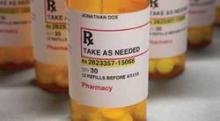When the triage nurse gets a positive result on the three-question screen, an ED physician is then brought in to ask additional questions aimed at gauging the severity and acuity of the patient’s suicidality.
“That’s done to help decide whether to consult psychiatry. That secondary screening is particularly important whenever you’re implementing universal screening because your primary screening identifies many low- to moderate-risk individuals,” the psychologist explained.
ED-SAFE is funded by the National Institute of Mental Health. Dr Boudreaux reported having no financial conflicts. bjancin@frontlinemedcom.com
J-Tip syringe cuts venipuncture pain in young kids
BY: BRUCE JANCIN
AT SAEM 2014
DALLAS—Jet-injected lidocaine is superior to vapocoolant spray in reducing venipuncture pain in children under 7 years of age, according to a randomized, double-blind clinical trial.
This form of needle-free local anesthesia, administered through what is popularly known as the J-Tip syringe, has been shown previously to decrease venipuncture pain in adults and older children. But data regarding the effectiveness of the J-Tip in young children has been scanty until now, Dr Maren M. Lunoe noted at the annual meeting of the Society for Academic Emergency Medicine.
She presented the findings of a randomized, sham-controlled, double-blind clinical trial involving 205 children aged 1-6 years who presented for venipuncture. Ninety percent had undergone the procedure before.
The J-Tip device utilizes a cartridge of compressed carbon dioxide to drive buffered lidocaine into the skin. However, it does so with a loud “pop,” which is why the study included a control arm featuring a sham J-Tip syringe with the compressed gas but no lidocaine, explained Dr Lunoe of the Medical College of Wisconsin, Milwaukee.
Participants were randomized 2:1:1 to the J-Tip syringe deployed roughly 30 seconds prior to venipuncture; to a refrigerated vapocoolant spray, also applied immediately prior to venipuncture, which has been usual care for a blood draw at Children’s Hospital of Wisconsin; or to a second control group who received vapocoolant spray and a sham J-Tip.
The primary endpoint was the FLACC score at venipuncture as assessed by two blinded physicians viewing videotapes of every procedure. The FLACC (Face, Legs, Activity, Cry, and Consolability) scale is a validated pain assessment tool scored 0-10. The median FLACC score while the young children were waiting for the nurse was 2.0. The score jumped by about 2 points in all three groups when the child saw the device. It climbed by another 5.5 points from that point to the actual venipuncture in controls who got vapocoolant spray only, and by 2.5 points in those who got vapocoolant spray plus a sham J-Tip. These increases in FLACC pain score at venipuncture were statistically significant and clinically meaningful. In contrast, patients who received needle-free lidocaine through a loaded J-Tip syringe did not experience a significant increase in FLACC scores at venipuncture.
Forty-five percent of patients in the J-Tip group had no or only mild pain at venipuncture as defined by a FLACC score of 0-3. This was the case in only 23% of the vapocoolant spray–only group and in 30% of controls who got vapocoolant spray and a sham J-Tip.
There were no between-group differences in adverse events, all of which were minor, consisting mostly of mild bruising.
Asked why the study didn’t include a comparison arm pretreated with EMLA cream, Dr Lunoe said that topical agent takes 30 minutes to take effect, making it unattractive for use in an emergency department or busy clinic.
National Medical Products and Gebauer, which market the J-Tip syringe and the vapocoolant spray, respectively, provided those supplies for the study but had no further involvement. Dr Lunoe reported no financial conflicts with regard to the investigation. bjancin@frontlinemedcom.com
More screening needed to detect injury, violence risk
BY: GREGORY TWACHTMAN
FROM THE LANCET
More risk screening for preventable injuries and violence needs to be done, according to the Centers for Disease Control and Prevention.
“Physicians and other health care workers have not yet included screening for injury risk into routine standard of care,” representatives of the agency wrote in an article published July 2 in the online version of the Lancet (2014, July 2).
The agency cited statistics that one in five adults received counseling about injury prevention. Failure to provide counseling was a function of health providers’ time limitations, according to the authors.
“Managed care organizations and other health care institutions have not fully codified injury prevention counseling into clinical workflow and electronic medical records to improve the delivery of injury prevention services,” according to Tamara M. Haegerich, PhD, associate director for science in the injury center in CDC’s Division of Unintentional Injury Prevention.

